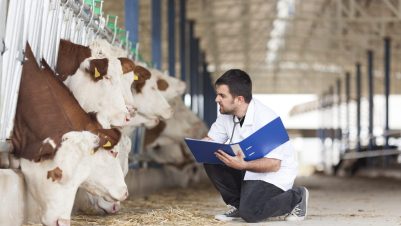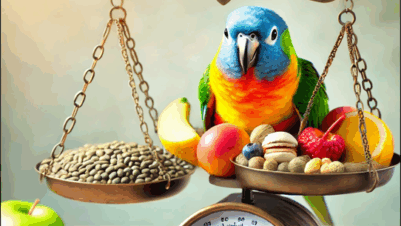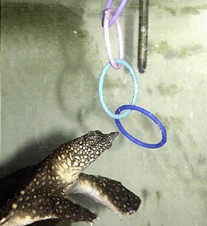There was a great deal to absorb at the 2018 British Cattle Veterinary Association Congress, including perspectives from the Chief Veterinary Officer, effective cattle vet recruitment and the welcoming of a new president, but the room was overfull to learn about the innards of sheep. There was great enthusiasm for the subject, and many had travelled just to listen to Ben Strugnell from Farm Post Mortems talk through a host of photographs and graphic descriptions.
Formally, it was all about the gross pathological findings seen in the common diseases of sheep and how this fits into a flock health plan, but at heart many veterinary surgeons are happiest when dealing with the blood and guts of veterinary practice. Although the speaker ran out of time, it really didn’t matter; much of his enthusiasm will have been passed on to those present and his concluding observation that “sheep never really let you down with pathology” may well be remembered.
Mastitis control
Earlier this year, 54 key dairy stakeholders were charged with reviewing the current status of mastitis control initiatives. Their advice was that a lower or entry-level approach would be beneficial and cost effective on many farms. Total antibiotic usage on dairy farms is heavily linked to mastitis and the Responsible Use of Medicines requirements indicate the need for an alternative to the full AHDB Mastitis Control Plan. Martin Green, professor at the University of Nottingham, and Andrew Bradley, Director of Quality Milk Management Services and professor at the University of Nottingham, described that the full plan was seen by some farmers as only for herds with a serious mastitis problem.
The origin of intramammary infections is the key to accurate advice and management, and the development of an automated pattern analysis tool that collates and interprets herd data allows a rapid approach to monitoring and improving udder health and is available to any dairy farmer. The Quarter PRO (predict, react, optimise) initiative offers quarterly reassessment to monitor progress and changes in udder health patterns, utilising data available from milk recording, somatic cell count and clinical mastitis records where available.
The tool has been compared to expert analysis of herds with known diagnosis and has been found to have a 90 percent correlation. More information and support resources are available from the AHDB website and it is intended that the new approach is accurate enough to engage with more farmers and support veterinary advice.
Evolving antibiotic standards
The changes to the antibiotic standards set by the Assured Food Standards Board (Red Tractor) were described by Jess Sloss. An annual review of antibiotics used is to be undertaken by the vet with a record of the total volume of antibiotic use on the unit. One member of the farm staff is to be trained to handle and administer medicines and critically important antibiotics are to be used as a last resort, following sensitivity tests and under veterinary direction. An annual inspection of animals by a vet would contribute to a written livestock health and performance review. An overall aim is to promote closer vet-farmer relationships.
As with other diseases, the more information that becomes available about Streptococcus uberis, the less is really known. Andy Biggs, Director at Vale Veterinary Group, highlighted that there are not only environmental strains of the organism causing subclinical and clinical mastitis but also cow adapted strains that exhibit contagious behaviour. This means that the organism has to be controlled within the environment and bedding and also in the milking parlour. Carrier cows of the organism within herds have been identified but different strains are environmental and cow adapted. It may be possible to have a “look up” table indicating the persistent or short-lived nature of the various strains, which would enable more accurate control on-farm.
Altering the breeding season in sheep
A detailed overview of the ways of manipulating the breeding season in sheep by Phillipa Page, from Flock Health, included the effective use of teaser rams, the careful planning required to advance the breeding season and the synchronisation of ewes for lambing. It was explained that “immense attention to nutrition and body condition” is required and that manipulation of breeding is not for flocks with poor current fertility. The speaker made an important point that some supermarkets specify in their purchase contracts that they will not purchase lambs that have been born as a result of hormone treatment to the ewe. It is worth seriously considering this development and identifying the source of the buyers’ concerns, as procedures in cattle may demand explanation.
A perspective from the CVO
Christine Middlemiss addressed the BCVA Congress for the first time since her appointment as Chief Veterinary Officer in March 2018. The title of the session was “A vet’s life post-Brexit” but the discussion with the delegates was wide-ranging. The concept of vet-led teams as a way of working was favoured by the speaker, with expertise being brought together for the team approach. There is an appetite for change, co-ownership and partnership working within government, with co-owned discussion, not a trend of government going away and doing its “thing”.

Funding will be available to achieve the best benefits from improvements sought by government in assurance and welfare standards. “There is no intention to reduce animal health and welfare standards,” Christine said. Ministers are more aware, due to Brexit, of what vets do. Trade support is essential; that includes exotic and notifiable disease detection and an updated outbreak assessment online, which is evidence based. The monthly snapshot of biosecurity risks has demonstrated the need to invest in surveillance with the UK Surveillance Forum underpinning national credibility.
The speaker highlighted that the use of antibiotics is still highly important to animal health and welfare. The 2016 EU Commission Audit made no recommendations, indicating that they are satisfied with animal welfare in the UK. The veterinary workforce is 52 percent UK qualified and those vets from other countries that are registered with the RCVS at the time of Brexit will be able to continue working in the UK.
A 200 percent increase in the certification of food from animal origin is anticipated after Brexit. The future includes a Livestock Information Programme that combines databases including carcass quality, genetics and disease that makes smarter use of intelligence, with digital lifetime data attached to the animal, not the keeper. In conclusion, the speaker emphasised that exit from the EU provides the opportunity to devise more effective animal health and welfare systems, with vets leading the initiatives.
It was highlighted at the congress that the BCVA will continue to raise funds for Send A Cow but with the uncertainty of Brexit there is no one outstanding theme for the coming year. Members are encouraged to utilise the content of bcva.org.uk to stay updated on future developments with cattle practice.












